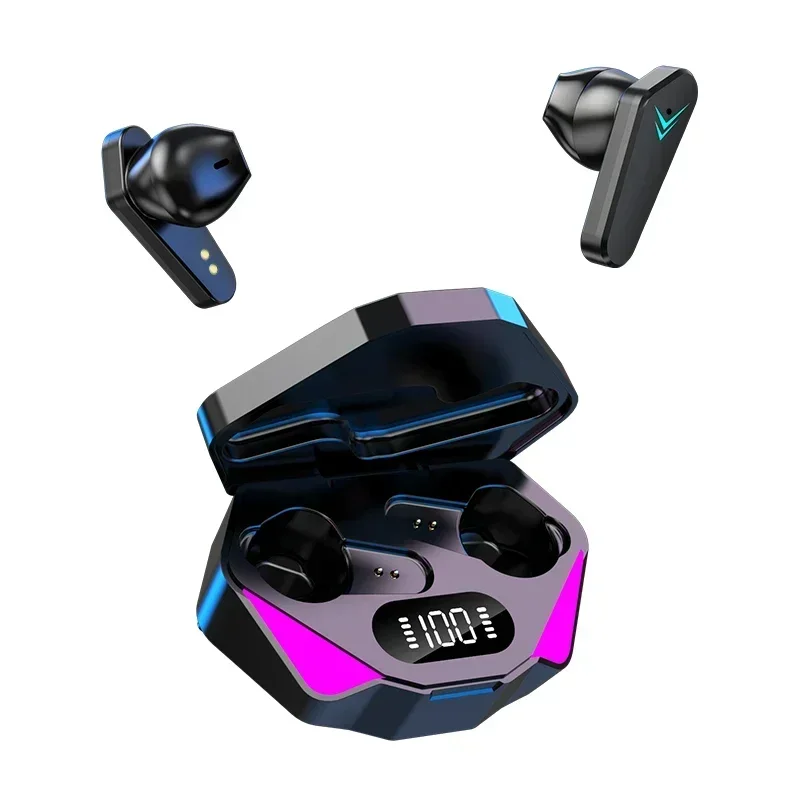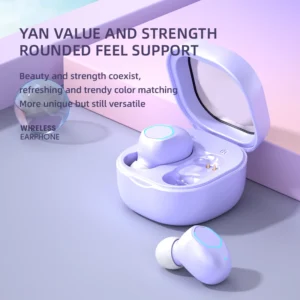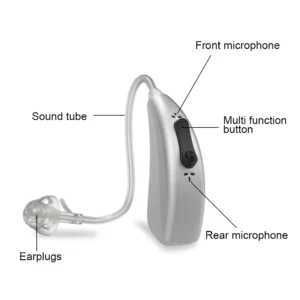
Hue hearing aids are a modern type of hearing aid designed to provide assistance to people with hearing impairments. They are known for their sleek design and advanced technology, often offering features such as Bluetooth connectivity, smartphone apps for customization, noise reduction, and directional microphones.
These modern hearing aids aim to improve the quality of life for individuals with hearing loss by enhancing their ability to communicate and engage in various activities. Additionally, some models incorporates features like rechargeable batteries for convenience. As with any medical device, it’s essential to consult with a hearing healthcare professional to determine the best option based on individual needs and preferences.

Bluetooth Connectivity: This feature allows the hearing aids to connect wirelessly to smartphones, TVs, and other Bluetooth-enabled devices, enabling streaming of audio directly to the hearing aids. It can also facilitate hands-free phone calls and audio control via smartphone apps.
Directional Microphones: These microphones help focus on speech coming from specific directions while reducing background noise, enhancing speech understanding in noisy environments.
Noise Reduction: Advanced noise reduction algorithms can differentiate between speech and background noise, suppressing unwanted sounds to improve speech clarity and comfort.
Feedback Suppression: Feedback suppression systems prevent the occurrence of whistling or feedback noises often associated with hearing aids, allowing for a more comfortable listening experience.
Adaptive Sound Processing: This feature automatically adjusts the hearing aid settings based on the surrounding environment, optimizing speech understanding and comfort in various listening situations.
Rechargeable Batteries: Many modern hearing aids come with rechargeable batteries, eliminating the need for regular battery replacement and offering convenience for users.
![]()
“See Stocks of Advanced Hue Hearing Aids“
Smartphone Apps: Companion smartphone apps allow users to adjust hearing aid settings, customize preferences, and access additional features, such as remote programming and tracking battery life.
Artificial Intelligence (AI): Some hearing aids utilize AI algorithms to analyze listening environments in real-time and make automatic adjustments to optimize sound quality and speech understanding.
Tinnitus Management: Certain hearing aids offer built-in tinnitus masking or relief features to help manage ringing or buzzing sounds in the ears.
Telecoil (T-Coil): Telecoil technology allows hearing aid users to connect to loop systems commonly found in public venues like theaters and churches, enhancing accessibility in these environments.
These are some examples of advanced technological features that are found in modern hearing aids.
Below are some common types of hearing aids with advance technological features:
These are just a few examples of the types of hearing aids available. Each type has its own set of advantages and considerations, and the best choice depends on factors such as the degree of hearing loss, lifestyle preferences, and budget. It’s essential to consult with a hearing healthcare professional to determine the most suitable option for your needs.

Hue hearing aids, like most hearing aids, are not just simple amplifiers; they are sophisticated devices designed to help people with hearing loss by amplifying sound, but they also do much more. Modern hearing aids, including those from the Hue brand, typically include features like:
The battery life of Hue hearing aids can vary depending on several factors, including the type of battery used, the hearing aid’s power consumption, and how frequently the hearing aids are used. Generally:
For the most accurate information, you should check the specific model’s manual or contact Hue directly.
For specific instructions on how to use Hue hearing aids, it’s best to refer to the user manual that comes with the device. However, I can give you a general overview of common features and basic usage tips for modern hearing aids, which should be helpful:
Social media page & hue hearing aids customer service :-
See also : Horizon mini hearing aid 2024
How to Manage Tinnitus at Home: If tinnitus is mostly noticed in quiet situations, first you should try using a white noise machine to mask the noise. If you don’t have a white noise machine, a fan, soft music or low-volumed static radio will help.




How do you deal with tinnitus? If tinnitus is mostly noticeable in quiet situations, try using a white noise machine to mask the noise from tinnitus. If you don’t have a white noise machine, a fan, soft music or low-volume radio static also may help.